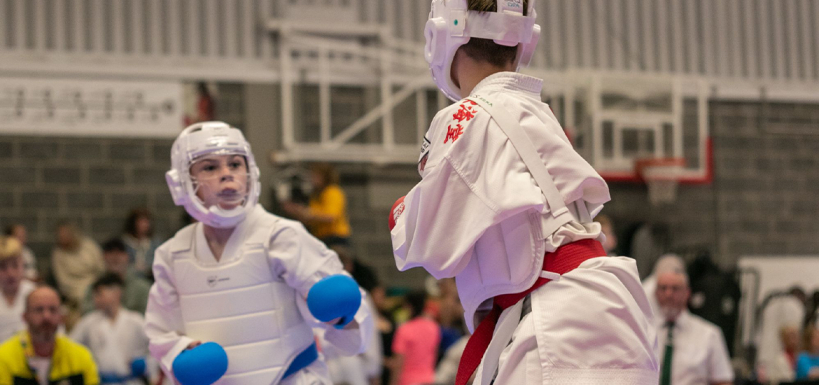The History Behind Karate Belts
When people think of martial arts, especially karate, they often think of the crisp white uniform with a colourful belt around the centre – or perhaps even a black belt for experts. While martial arts is a practice with a long history, the belt progression system has only been around for a relatively short time.
Understanding the roots of belt ranking in martial arts necessitates delving into Japanese culture, where the practice originated. The often-heard narrative traces back to the idea that students would commence their training with white belts, which would progressively accumulate signs of dedication, such as sweat, grass stains, blood, and dirt. Allegedly, students were instructed never to wash their belts, as cleansing it would erase the experiences it embodied. While the myth of unwashed belts persists, there is no concrete evidence supporting this claim. In Japanese culture, cleanliness and respect hold significant value, making it unlikely that students were ever discouraged from washing their belts. Despite the popular belief, many martial arts schools today advise against washing belts, primarily to preserve their quality rather than to uphold the notion of accumulated experiences.
The belt system reflects discipline, growth, and a deep connection to martial arts history. It's a journey of self-discovery and perseverance.
Kanō Jigorō
Prior to the inception of the belt-based ranking system, traditional martial arts used a teaching license system. Masters would bestow a calligraphed scroll, functioning as a certificate acknowledging a student's mastery and skill, permitting them to teach certain techniques and learn newer, more secretive techniques. Those of you who are strong on your Wado history may recall that Ohtsuka, the founder of Wado Ryu, held a Menyko Kaiden in Shindo Yoshin Ryu: an expert-level teaching licence.
The idea of a belt-based ranking system is attributed to Kanō Jigorō: the founder of Judo. Kanō, an advocate of experimentation and innovation, introduced the dan system in 1883. This system categorized students into dan grades, recognized as yūdansha, meaning "person who has dan," and kyū grades, referred to as mudansha, translating to "person without dan." The dan levels were associated with a black belt, while the kyū levels were linked to a white belt. Kanō drew inspiration from the ancient Chinese strategy game Go, where players are ranked using the kyū and dan system.
However, the widespread adoption of the belt ranking system did not occur immediately. It wasn't until 1956 that the Okinawa Karate Federation was formed, universalizing the kyū/dan system. The integration of the belt ranking system into martial arts outside judo began in 1924, when Gichin Funakoshi, the founder of Shotokan Karate, awarded the first karate black belts. Originally rooted in judo, the belt ranking system transcended to become a common association with all manner of martial arts disciplines.
The modern-day array of coloured belts, each with symbolic significance, emerged when judo master Kawaishi Mikonosuke introduced the coloured belt ranking system in Paris during the 1930s. While the belt ranking system represents only a fraction of martial arts' extensive history, it has evolved into a cherished tradition and a significant rite of passage for many. Belt ceremonies acknowledging a student's progress through the ranks add a ceremonial touch to this enduring practice.
Today; different associations and styles use different belt colours. Inferno Karate uses white, yellow, orange, green, blue, red, brown, and the ever-coveted black belt. If you are interested in earning your Inferno Karate black belt, be sure to register for your free trial class.




